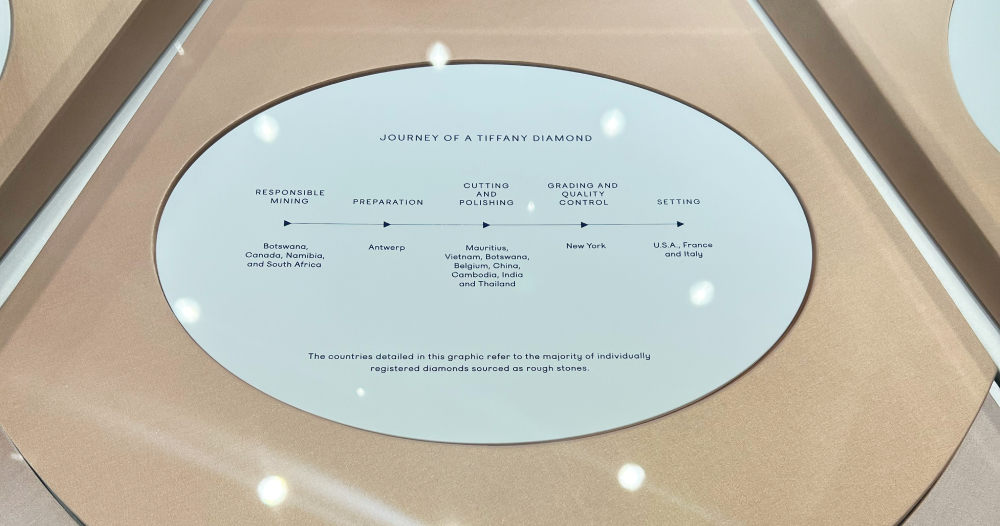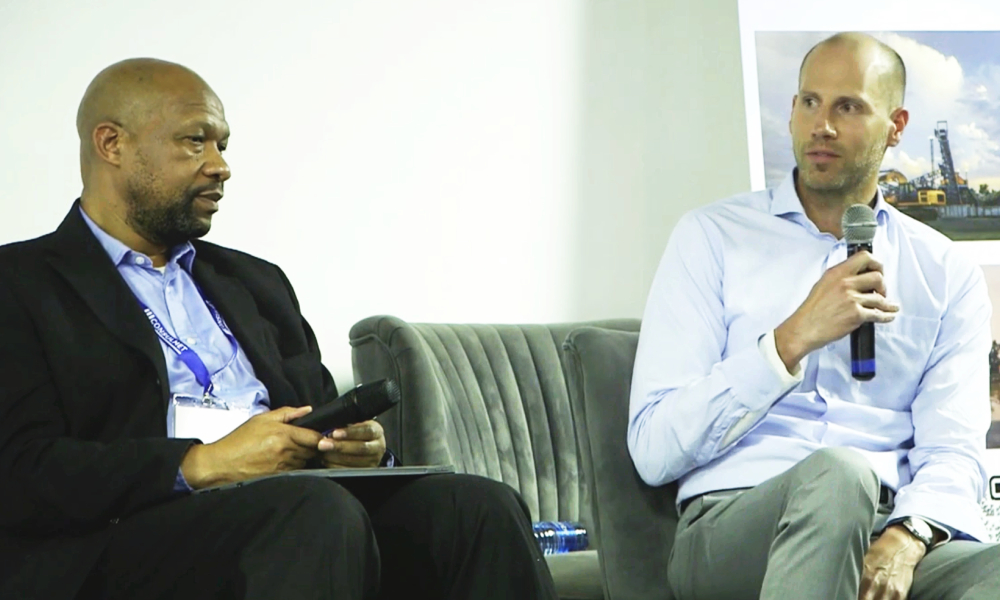With consumers placing greater emphasis on ethical sourcing, efforts towards transparency in the diamond supply chain not only address pressing concerns but also open doors to innovative opportunities within the market, reports diamond analyst Paul Zimnisky.
Back in October 2020, Tiffany & Co. began providing customers with the geographical source of each diamond 0.18-carats and larger. For a major jeweller, it was an industry first. At the time, the company also made a commitment not to source any diamonds with unknown provenance going forward. Management attributed the milestone to Tiffany’s “20-plus year investment in vertical integration.”
A few months later, upstream industry steward, De Beers, publicised that it was “embarking” on a tracking mechanism for all goods sold through its Sightholder system – with the program building on its Tracr “digital provenance” technology which it soft-launched in 2018. As of early-2024, De Beers said it can now track “more than two-thirds” of its production by value – which last year amounted to some $3.6 billion, or about a quarter of global supply.
It can be argued that supply chain transparency is the single most important initiative for the natural diamond industry given the potential it has to combat of all its current ailments.
For instance, if the industry can tell consumers where their diamond came from it can quell concerns related to whether the diamond is ethically clean (not a “blood-diamond”) and also whether it is a “real” natural diamond (and not a man-made stone or diamond simulant). Finally, with a provenance the trade can up its marketing effectiveness based on the concept of providing each individual diamond with a unique “story” – especially as it pertains to the good that a diamond can do. The latter has the potential to further delineate the perception of a natural stone from a man-made alternative.
Progression on this front has been inevitably accelerated following the Western world’s response to the Russia/Ukraine war. In early 2022, the U.S. implemented sanctions aimed at restricting the flow of Russian diamonds into the country. In 2024, the larger G7 and EU coalition is rolling out more a comprehensive set of sanctions on the importation of Russian diamonds into the greater Western consumer market.

By the end of the year, it is expected that the sanctions will require almost all polished diamonds sized 0.5-carat and larger to possess “digital supply-chain evidence” that they are not of Russian origin. While the finer details have yet to be sorted, the G7 will likely manage a “blockchain ledger” or sorts which will be fed digital tracking data from technologies such as De Beers’ aforementioned Tracr. The effective result should be a wide-reaching level of transparency like the industry has never seen before.
To put this into context, using the 0.5-carat size cut-off, approximately 40-45% of world’s jewellery-quality diamonds by value sold will be fully “traceable” to their origin – i.e. this excludes industrial-quality diamonds, Russian diamonds and diamonds too small to meet the size cut-off. (Note: By volume, the figure is estimated to be less-than 10% of global supply.)
While the sanctions will ultimately act as a catalyst to bring new-found transparency to the larger diamond supply-chain, it is up to the industry to leverage this into consumer demand and sales via marketing, branding and other creative efforts.
Paul Zimnisky, CFA is an independent diamond industry analyst and consultant based in the New York metro area. For regular in-depth analysis and forecasts of the diamond industry please consider subscribing to his State of the Diamond Market, a leading monthly industry report; an index of previous editions can be found here. Also, listen to the Paul Zimnisky Diamond Analytics Podcast on iTunes or Spotify for exclusive full-length conversations with special guests from the gem and jewelry industry. Paul is a graduate of the University of Maryland’s Robert H. Smith School of Business with a B.S. in finance and he is a CFA charterholder. He can be reached at paul@paulzimnisky.com and followed on X @paulzimnisky.
Disclosure: At the time of writing Paul Zimnisky held a long equity position in Lucara Diamond Corp, Brilliant Earth Group, Star Diamond Corp and Newmont Corp. Paul is an independent board member of Lipari Diamond Mines, a privately-held Canadian company with a kimberlite mine in Brazil and a development-stage asset in Angola. Please read full disclosure at www.paulzimnisky.com.

